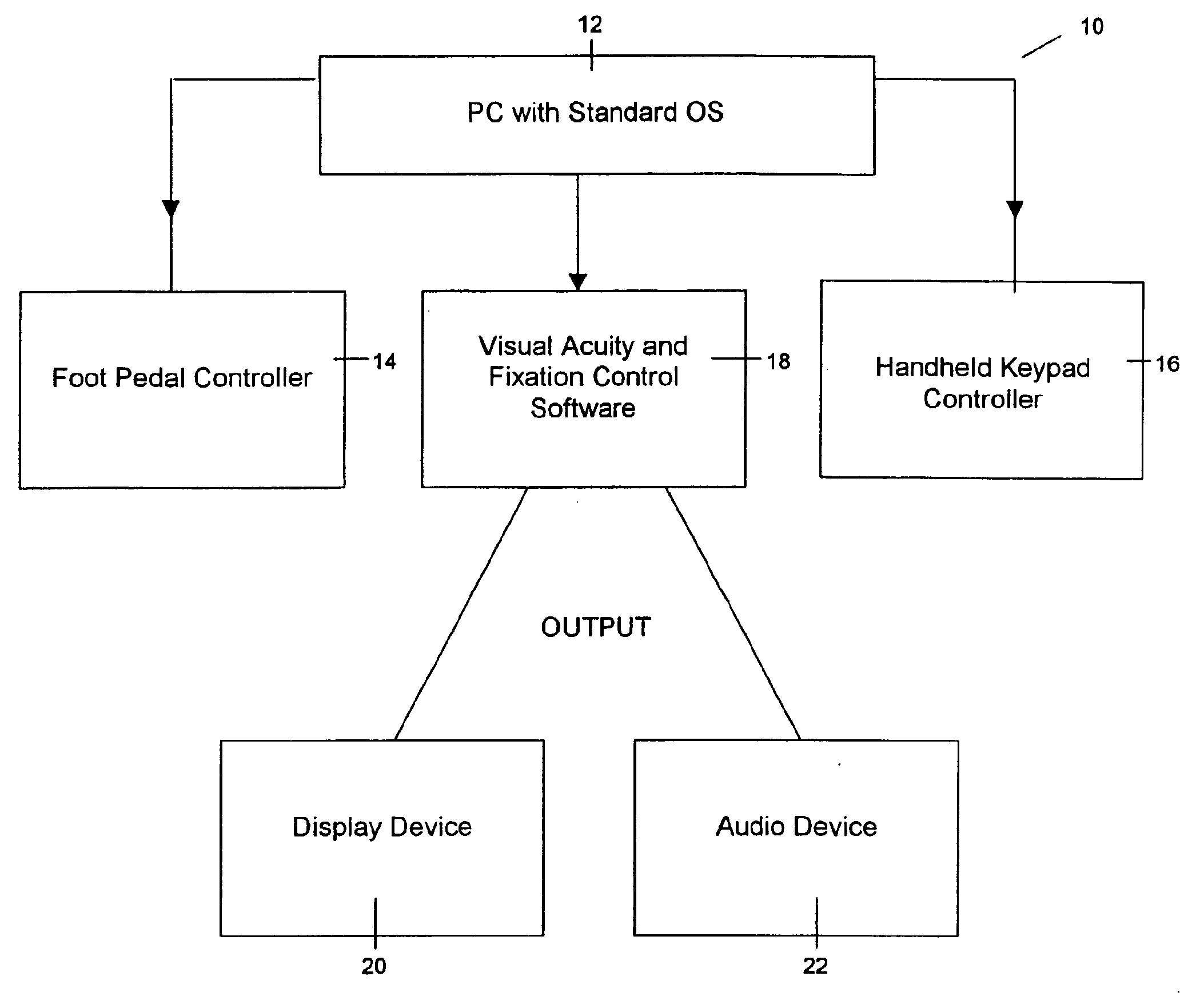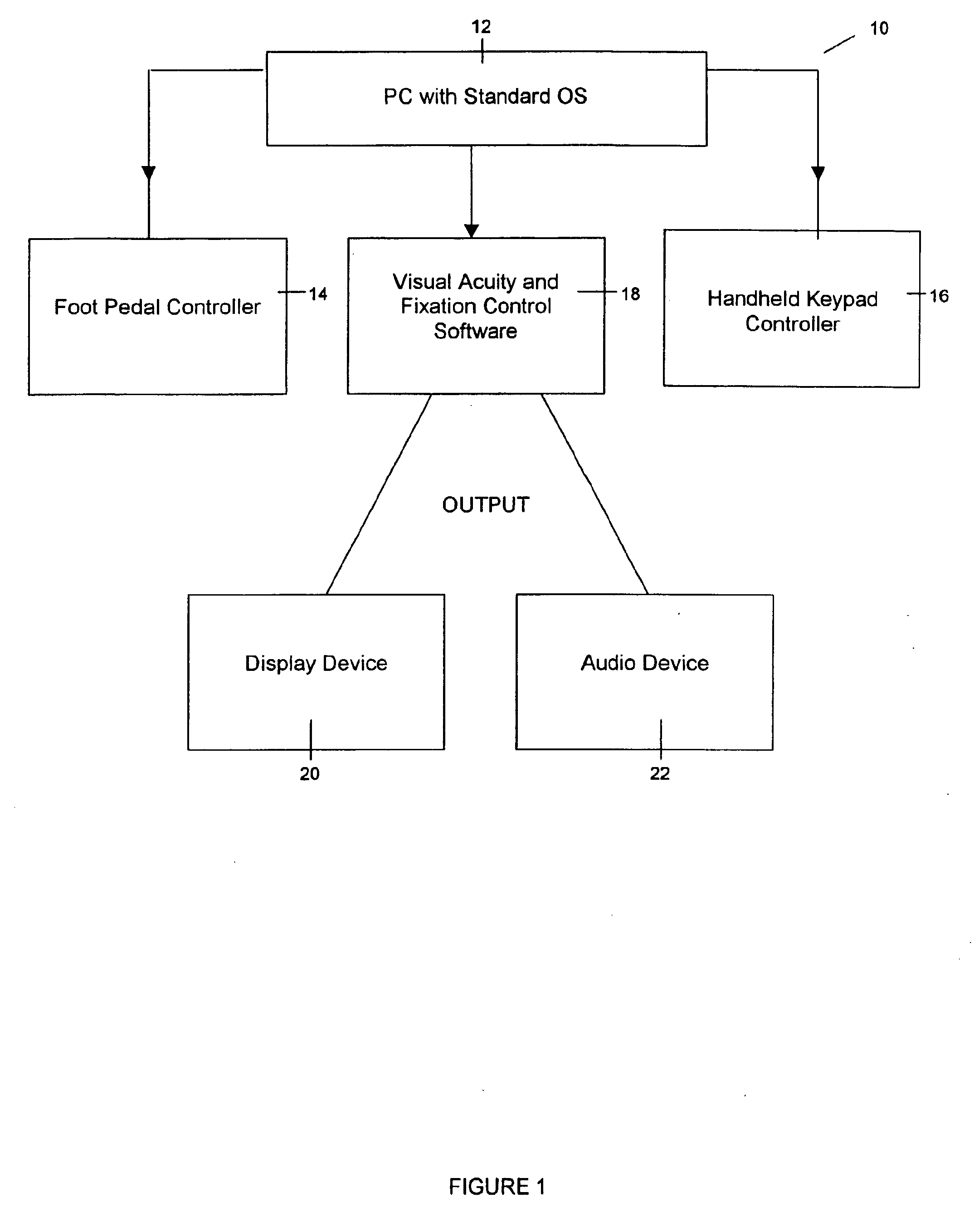Apparatus and method for testing visual acuity and fixation control
a technology of visual acuity and apparatus, applied in the field of visual acuity assessment, can solve the problems of visual acuity or sharpness, unclear visual details, inability to perceive visual stimuli, etc., and achieve the effect of better functionality and ergonomics
- Summary
- Abstract
- Description
- Claims
- Application Information
AI Technical Summary
Benefits of technology
Problems solved by technology
Method used
Image
Examples
Embodiment Construction
[0032]In accordance with one aspect of the present invention, an apparatus and method for conducting a visual acuity test (VAT) is provided. FIG. 1 schematically illustrates a computer-based system in accordance with a preferred embodiment of the present invention. The system includes a conventional computer 12 or central processing unit (CPU) with an operating system, such as Windows®. It is contemplated, however, that the present invention can be designed to be compatible with other computer operating systems, such as Apple®, Linux®, Unix and so forth. The apparatus comprises a display device 20 and audio device 22 used in conjunction with a computer 12, a first controller or foot pedal controller 14, a second controller or handheld keypad controller 16 used in conjunction with control software 18 to provide video and audio output to a display device 20 and audio device 22, respectively. The method according to the present invention includes the use of a particular arrangement of ...
PUM
 Login to View More
Login to View More Abstract
Description
Claims
Application Information
 Login to View More
Login to View More - R&D
- Intellectual Property
- Life Sciences
- Materials
- Tech Scout
- Unparalleled Data Quality
- Higher Quality Content
- 60% Fewer Hallucinations
Browse by: Latest US Patents, China's latest patents, Technical Efficacy Thesaurus, Application Domain, Technology Topic, Popular Technical Reports.
© 2025 PatSnap. All rights reserved.Legal|Privacy policy|Modern Slavery Act Transparency Statement|Sitemap|About US| Contact US: help@patsnap.com



